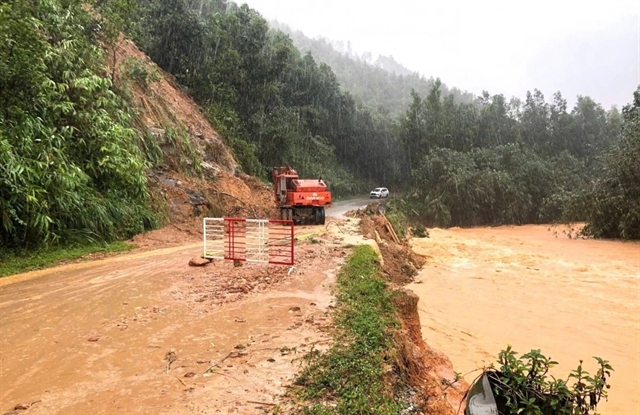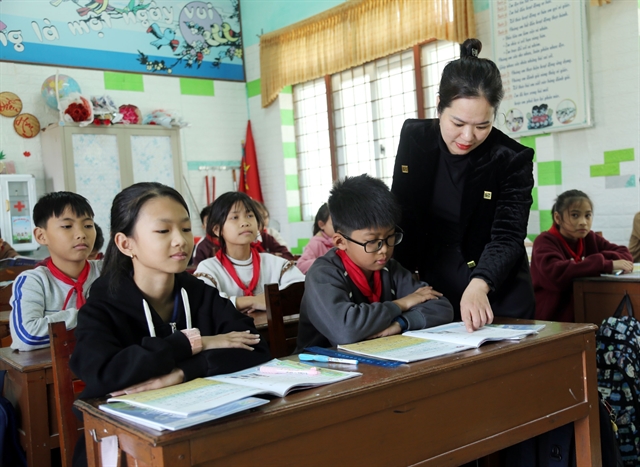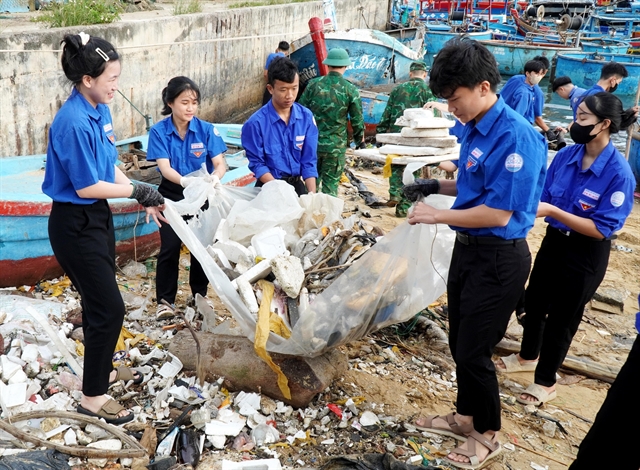 Society
Society
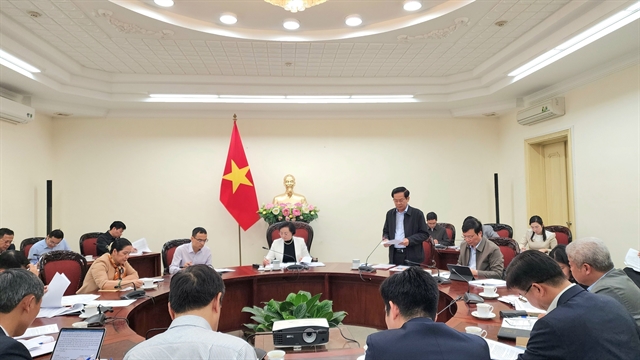
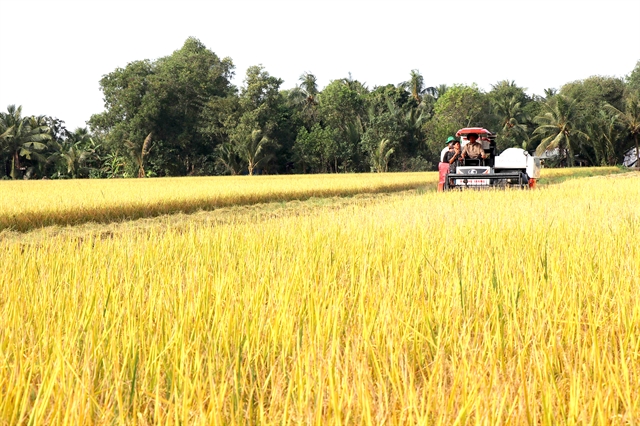 |
| A rice field belonging to a member of the Phước Hảo Agricultural Co-operative in Châu Thành District, Trà Vinh Province and part of the Ministry of Agriculture and Environment’s project to develop one million hectares of high-quality, low-emission rice cultivation linked to green growth in the Mekong Delta by 2030. – VNA/VNS Photo Thanh Hoà |
TRÀ VINH – Trà Vinh Province is accelerating the restructuring of its agriculture, forestry, and fisheries sectors to drive growth this year.
The Cửu Long (Mekong) Delta localilty aims to achieve sectoral growth of 2.59 per cent this year, according to its Department of Agriculture and Environment.
Last year the sector achieved production worth VNĐ32.4 trillion (US$1.27 billion), the department reported.
Trần Trường Giang, director of the department, stated that his agency would implement various measures to meet the growth target, including restructuring production.
Localities would enhance advocacy efforts to raise farmers' awareness, encouraging them to abandon outdated farming practices and establish concentrated farming areas to ensure large outputs, he said.
Farmers are being encouraged to join co-operatives and co-operative groups to foster linkages between stakeholders, increase profits and develop agricultural production sustainably.
The province has 127 agricultural co-operatives.
It is supporting co-operatives in adopting digital technologies for management, operations and production to improve efficiency and adapt to climate change.
The Kim Hoà Agricultural Co-operative in Cầu Ngang District has successfully implemented organic and low-emission rice cultivation, along with rotating rice-aquatic species farming.
Lâm Hồng Cẩn, director of the co-operative, said: “Zoning and organising agricultural production according to each ecological zone have helped farmers increase their income and reduce the risks associated with climate change.”
The province's 14 rice co-operatives are cultivating more than 728ha of rice during the ongoing winter-spring crop under the Ministry of Agriculture and Environment's project to develop one million hectares of high-quality, low-emission rice cultivation linked to green growth in the Mekong Delta by 2030.
Farmers participating in the project receive support to grow new high-quality rice varieties, apply advanced farming techniques and establish linkages among stakeholders in rice production and trade.
Rice field conversion
Trà Vinh plans to convert more than 500ha of unproductive rice fields and instead cultivate others crops, breed livestock or rotate rice with aquatic species this year.
In previous years this has provided farmers with profits two to four times higher than rice cultivation alone, according to the department.
But encouraging rice farmers to switch to higher-value crops has faced challenges, as many are reluctant to change their traditional farming methods, apprehensive about adopting new techniques, and concerned about market demand, the department noted.
The department is encouraging farmers to diversify their aquaculture practices to secure a stable income.
Nguyễn Văn Lâm, a farmer in Duyên Hải District's Long Khánh Commune, has practised shrimp-forest farming on a 4ha mangrove forest for many years.
He breeds shrimp, fish, mud crabs, and other aquatic species in the forest, earning a profit of VNĐ200 million ($7,900) annually.
His products are chemical-free, as the aquatic species feed primarily on natural food sources in the mangrove forest.
Traders purchase his products at prices 25-30 per cent higher than market rates, he said.
Trần Quốc Đoàn, head of the Duyên Hải District Bureau of Agriculture and Environment, said local farmers have been rotating shrimp farming with other aquatic species to adapt to climate change while ensuring high incomes.
The model of intercropping blood cockles and shrimp in the same ponds has yielded 4.4 tonnes of the bivalve mollusc per hectare per crop cycle, which lasts 4-4.5 months, he said.
This model generates profits of VNĐ145 million ($5,700) per hectare per blood cockle crop, he said.
With a 65km coastline, the province has substantial potential for aquaculture development, with brackish-water shrimp farming identified as a key economic sector.
Brackish-water shrimp farming has been practised in the province for over 30 years, with a total farming area of 33,300ha, ranking sixth in terms of large brackish-water shrimp farming areas among the Mekong Delta's 12 provinces and Cần Thơ City.
The province is prioritising investment in irrigation, power, and transport infrastructure in key shrimp-farming areas and is restructuring production towards developing value chains for agricultural products.
It plans to cultivate 24,000ha of black-tiger shrimp and 8,000ha of white-legged shrimp in brackish-water areas this year.
So far this year, coastal farmers have farmed more than 8,000ha of black tiger shrimp and white-legged shrimp, an increase of 1,500ha compared to the same period last year, according to the department.
The province aims to produce 200,000 tonnes of seafood in coastal areas this year.
Giang, the department director, said the body will enhance the transfer of aquaculture breeding techniques to farmers to improve yield and quality.
Besides encouraging farmers to maintain existing forest-aquaculture areas, the province has instructed coastal localities to expand aquaculture to 50,000ha of coastal land and 15,000ha of mudflats and riverine islands to help farmers achieve sustainable income growth.
The province is allocating VNĐ35 billion ($1.4 million) to the Farmer Support Fund to provide soft loans for farmers between 2025 and 2029.
Quảng Thanh Tú, deputy chairman of the provincial Farmers Association, said that with this financial allocation, the fund will have a total capital of VNĐ53.5 billion ($2.1 million) to offer soft loans to farmers associated with the organisation to implement and expand effective farming models.
The fund has already provided soft loans to thousands of farmers, helping them develop their production and increase their income by 10-20 per cent, he said.
The association has more than 130,000 farmers. – VNS


